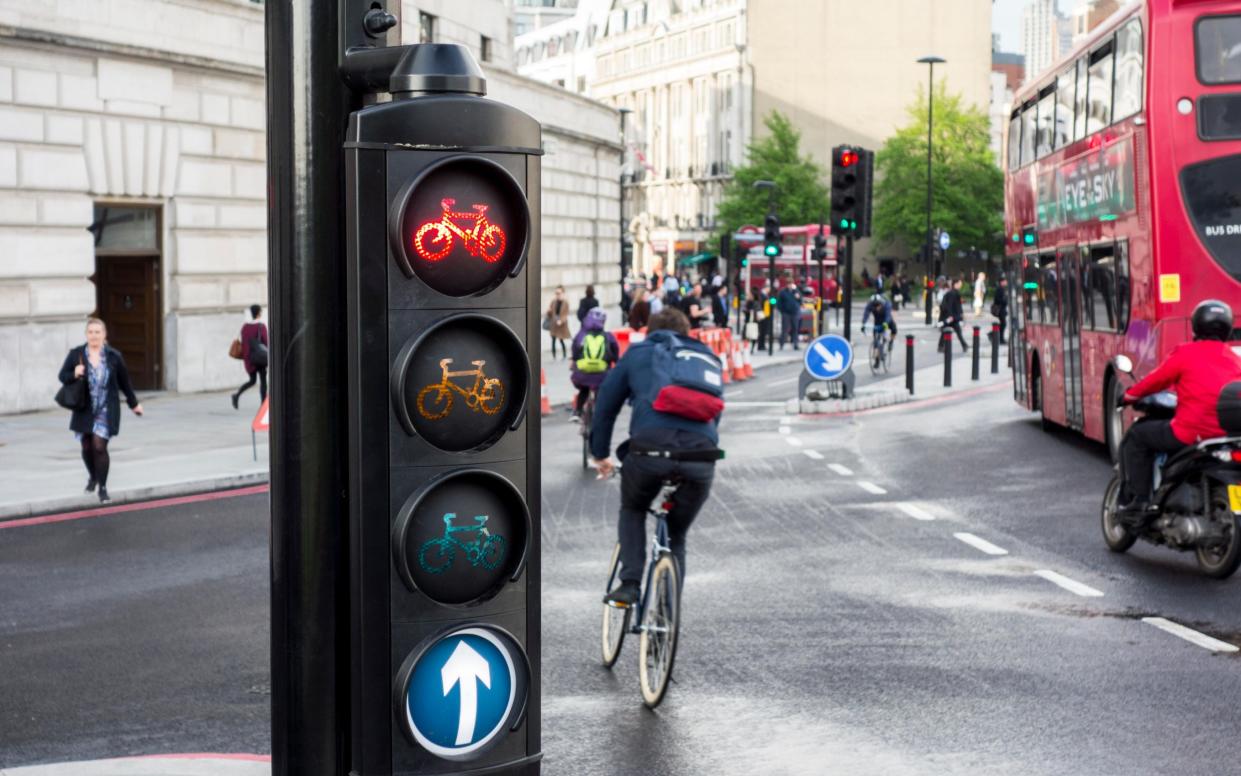Police back new laws for cyclists who kill and injure pedestrians

Eleven cyclists a day are fined for running red lights in London, according to official data – as police back tougher new laws to target cyclists who kill and injure pedestrians.
Metropolitan Police official statistics show 4,067 cyclists were fined by officers for failing to obey traffic light signals in 2023.
The response from Freedom of Information also reveals 196 cyclists – about one every two days – were issued with fixed penalty notices for riding on pavements.
The statistics have emerged after the Department of Transport released research which shows constabularies across the country backed calls for cyclists who kill or maim pedestrians to face similar charges as motorists.
The report “Analysis of the consultation on new cycling offences” shows police were “broadly supportive” of new tougher laws being introduced to target reckless and dangerous cyclists.
Families of relatives killed by cyclists have been campaigning for laws to be updated so cyclists who kill face similar criminal offences and punishments as motorists. Both Labour and the Conservatives have pledged to introduce such legislation after the election.

While motorists who kill can be jailed for life for dangerous or reckless driving, cyclists face a maximum of only two years in jail under a Victorian law for “wanton and furious” driving intended for horse-drawn carriages.
In theory, a cyclist could be convicted of involuntary manslaughter, which can result in a life sentence – but this is highly unlikely when the lesser charge is available.
The authors analysed official data which showed that 2,491 pedestrians were injured by cyclists over a six year period. Of those, 20 were killed and 546 were seriously injured.
The Government consultation received responses from 35 police forces which were “broadly supportive” of new laws, although their “biggest concern” was how such legislation would be applied.
The report adds that “most local government bodies supported” new tougher laws but “pointed out their need to promote cycling and highlighted the comparatively few collisions between cyclists and pedestrians compared with those involving motor vehicles and pedestrians or cyclists”.
It also showed 53 per cent of cyclists were against new offences being introduced for causing death by careless cycling, if the rider is found to be under the influence of drink or drugs. And 74 per cent of cyclists opposed increasing the current £1,000 fine for those caught on a bike while unfit through drink or drugs.
It noted “the most common statements from respondents who said they cycle were ‘motorists are dangerous; focus on them instead’.”
Numerous data is excluded
The true figure for pedestrian fatalities caused by cyclists is higher than official figures state because so-called Stats 19 data does not include all of those killed or injured, due to technicalities in how the records are collated.
The Telegraph has uncovered glaring failings in how Stats 19 is collected because many elderly pedestrians who die after being hit by cyclists succumb to their injuries more than a month after the collision. The data excludes fatalities that occur more than 30 days after any road traffic accident.
Meanwhile, numerous public spaces where cyclists ride and have hit pedestrians are omitted because motorised vehicles do not use those same routes and are therefore excluded from Stats 19 data.
Areas such as bus, railway and petrol stations; picnic and service areas; municipal or private parks; private industrial estates; pedestrian malls and private retail shopping parks; private residential estates; harbours; unadopted roads which are not maintained by public money and car parks and their access roads are all omitted from Stats 19 – despite them being locations where cyclists and pedestrians encounter one another frequently.
The issue surrounding safe cycling came to the fore in May after The Telegraph revealed how Hilda Griffiths, 81, died after receiving serious injuries in a collision with a cyclist riding in a “fast group” exceeding a 20mph speed limit while doing time trials in Regent’s Park.
Cyclists not legally required to obey speed limits
Brian Fitzgerald, a director at Credit Suisse and a member of the Muswell Hill Peloton cycling club, was travelling at up to 29mph in an aerodynamic “pace line” formation to maximise speed when he struck the retired nursery teacher who stepped into the road in June 2022.
Mr Fitzgerald told an inquest he had zero-reaction time, explaining how cyclists are not legally required to obey speed limits.
Police concluded there was “insufficient evidence for a real prospect of conviction” and the case was closed because there were “no specific” speed limits for cyclists.
Mrs Griffiths, from Marylebone, central London, succumbed to her injuries after 59 days.
As she died more than a month after the collision, her death was not counted as a pedestrian dying from a collision with a cyclist on official data.

 Yahoo News
Yahoo News 
